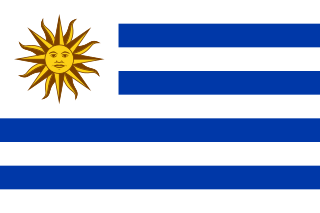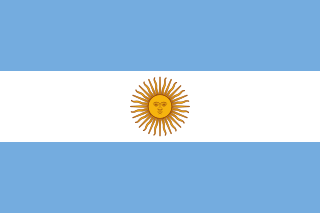For the thirteenth edition of the South American football Championship (known as Copa América since 1975), the competition returned to the Peruvian soil for the second time in its history, after [comp_annee:3*1927]edition of 1927. Six years have passed since the last South American Championship, and during this period, a new competition was established, FIFA World Cup. Uruguay, organizer of the first edition became the first selection champion of the world in the history of football, consecration of an already dominating team in South America. Argentina, the eternal rival of la Celeste, came in the final of the tournament but could not only losing to the Uruguayan players. The match won by Uruguay 4-2 was born an animosity between the two South American selections. In 1934, [comp_annee:1*1934]the second FIFA World Cup was organized in [pays:177]Italy, edition which did not participate the Uruguay, and in which the Argentina was eliminated in the first round. A year later, CONMEBOL decided to resurrect the South American Championship and it is therefore natural that Argentines and Uruguayans are found in "their competitions". To complete the tournament, Chile participates again in the competition after missing the last two editions during. At the opposite, the other selections affiliated to CONMEBOL, Brazil, [pays:48]the Bolivia, and [pays:54]Paraguay, dont participate to the tournament.
All matches of the South American football Championship 1935 unfold in estadio Nacional in the capital of the country Lima.
The winner of the tournament qualifies for the next summer Olympics 1936 in Berlin (Germany).
Since the 1st [comp_annee:1*1930]FIFA World Cup in 1930, the rules of football evolved, each team has the right now to make three replacements for players during a match. On the other hand, the referee still lacks of yellow and red cards.
The four participating selections vie for victory in a single group, each team in turn, meeting the first of the group won the competition. A won match scores 2 points, a match draw 1 point, and a loss 0 point.
In case of equality of points between the top teams in the group, a second round is expected to know the winner of the competition.
On January 6, 1935, the South American football Championship begins.
In the estadio Nacional in Lima, 25,000 spectators are present to attend the first game of the competition, Argentina against the Chile. Argentina, in the shadow of the Uruguay since that victory at the 1930 World Cup, only remains not less double champion title in the South American football Championship. Coach Manuel Seoane, the former striker of the Albiceleste and top scorer of [comp_annee:3*1925]the edition 1925, can count on players motivated, ready to give everything on the field to retain the title and beating once again Uruguayan rival. The Chile returns in a competition that he has never really addressed, and for his return finally wants to defend proudly its colors. The Peruvian referee M. Miguel Serra Hurtado kicks sending, and Arturo Carmona arises from the 8th minute to fool the Argentine goalkeeper Bello. The hardest is made for the Chile, take this result whatever the cost. The striker of the Estudiantes de La Plata Miguel Ángel Lauri leaves no chance to Roberto Cortés and the Argentina will finally doubted that twenty minutes. Half time is piped on this score of parity, and upon return locker rooms, Arturo Arrieta gives the advantage to the Argentines (49th). On the bench, the Argentine coach Manuel Seoane wants still more, and Diego García, returned for the second period, scored the third goal of the match. Chileans have a knee to the ground, and Herminio Masantonio completes the task at the 71st minute. Score final 4-1 to Argentina, start of tournament without false note for the defending champion.
A week later, 25,000 spectators flock in the stadium to encourage the Peru facing the feared Uruguayan. Chilean referee whistle the kickoff, and supporters give voice to push the men of the Peruvian coach Telmo Carbajo. The first 45 minutes ended with the 0-0 score, and this match headed right to the share of the points when "El Manco" Héctor Castro recalls the good memory of this competition and comes to deceive the Peruvian goalkeeper Juan Humberto Valdivieso (80th). Stupor in the stands, it is too late for Peru, and the Uruguay is hardly necessary, but only victory counts and the two points in the standings.
On 18 January, the Uruguay pushes the lawn of the Estádio Nacional, opposed this time to the Chile. 33rd minute, the young striker of 20 years of the Nacional Aníbal Ciocca adds his name one of the scorers in the competition, and it is said that the Uruguay is party to inflict a severe correction to la Roja. But the Chilean selection of the Uruguayan coach Pedro Mazullo wants at any price beat the 1930 world champion, and his players started the second period as deaths from hunger. 54th minute, Carlos Giudice equates to the Chile. The time to congratulate, and Anibal Ciocca sign a double one minute later. Chileans are stunned, and the score no longer moves until final whistle. 2-1 victory of the Uruguayan selection, which has 2 wins in two games, four points in the standings, leader of the competition.
Two days later, the Argentina knows what it must do if it wants to retain her title, she must win its game against the Peru. The striker of the Universitario Teodoro Fernández ice Argentine ambitions two minutes after the kickoff. A huge sensation is running, but Herminio Masantonio leaves no doubt invade its partners and equalizes at the 10th minute. 1-1 at half time, and Diego García, this licensee time, gives the advantage to the Argentina at the 50th. The Peru begins to falter, then broke twice again under the onslaught of the same Masantonio, ending the match by a triple. Final score 4-1 for the Albiceleste, she returned to the tune of the Uruguay in the standings and will play as many times before in this tournament, the title in the last game.
But on January 26, gives way to the Peru against Chile, the match of the two "losers" in the competition. 12,000 spectators waiting for a local victory, and Alberto Montellanos seals the score of the match at the fifth minute. Victory of the Peru on the smallest of margins, ending his tournament honor except, the Chile found her dirty habits with three defeats in three games.
The next day, the estadio Nacional fills gradually 30,000 spectators, all came for the match of the tournament, the double defending champion Argentine Uruguayan world champion. The Chilean referee Mr. Humberto Reginatto gives the kickoff, and Uruguayan players take literally the throat Argentine players, Héctor Castro finalising this domination at the 18th minute. 25th minute blow to Argentina, his goalkeeper Fernando Bello must come out and leave his place to his replacement, the goalkeeper of the club of San Lorenzo Sebastián Inocencio Gualco. As the men of the Argentine coach Raúl V. Blanco, far from satisfying this opening of the score, they continue to attack, and the forward of the Wanderers José Alberto Taboada cold picked the new entrant. 2-0 for la Celeste, which definitely completes the Argentine illusions at the 36th minute when Anibal Ciocca mark his third goal of the competition.
Score final 3-0 to Uruguay, which won a decisive match against Argentine rival, and la Celeste won for the seventh time in its history the South American football Championship.
With 4 goals in that competition, the Argentine striker of the Huracán Herminio Masantonio is the top scorer of the South American football Championship 1935.
Although winner of the competition and therefore qualified for the upcoming summer Olympic Games 1936 Berlin, the Uruguay renounces to take part in the event for economic reasons. His heir apparent, the Argentina, refused for the same reasons. Ultimately, it is the Peru who is chosen to represent South America at this event.



